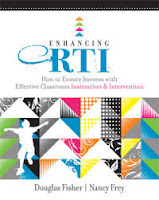This book is based on a study of referees' reports and letters from journal editors on reasons why papers written by non-native researchers are rejected due to problems with English (long sentences, redundancy, poor structure etc). It draws on English-related errors from around 5000 papers written by non-native authors, around 3000 emails, 500 abstracts by PhD students, and over 1000 hours of teaching researchers how to write and present research papers.
The exercises are organized into ten chapters on: punctuation and spellingword orderwriting short sentences and paragraphslink words - connecting phrases and sentences togetherbeing concise and removing redundancyambiguity and political correctnessparaphrasing and avoiding plagiarismdefining, comparing, evaluating and highlightinganticipating possible objections, indicating level of certainty, discussion limitations, hedging, future workwriting each section of a paperSome exercises require no actual writing but simply choosing between various options, thus facilitating self-study, e-reading and rapid progress.
In those exercises where extended writing is required, model answers are given. Exercise types are repeated for different contexts, for example the importance of being concise is tested for use in papers, referees' reports, and emails of various types. Such repetition of similar types of exercises is designed to facilitate revision.
The exercises can also be integrated into English for Academic Purposes (EAP) and English for Special Purposes (ESP) courses at universities and research institutes. The book can be used in conjunction with the other exercise books in the series and is cross-referenced to: English for Research: Usage, Style, and Grammar English for Writing Research Papers
 Foreign-Language Learning with Digital Technology,: critical and central issue for this series is to explore the ways in which digital technologies can be said to enhance teaching and learning.
Foreign-Language Learning with Digital Technology,: critical and central issue for this series is to explore the ways in which digital technologies can be said to enhance teaching and learning.






